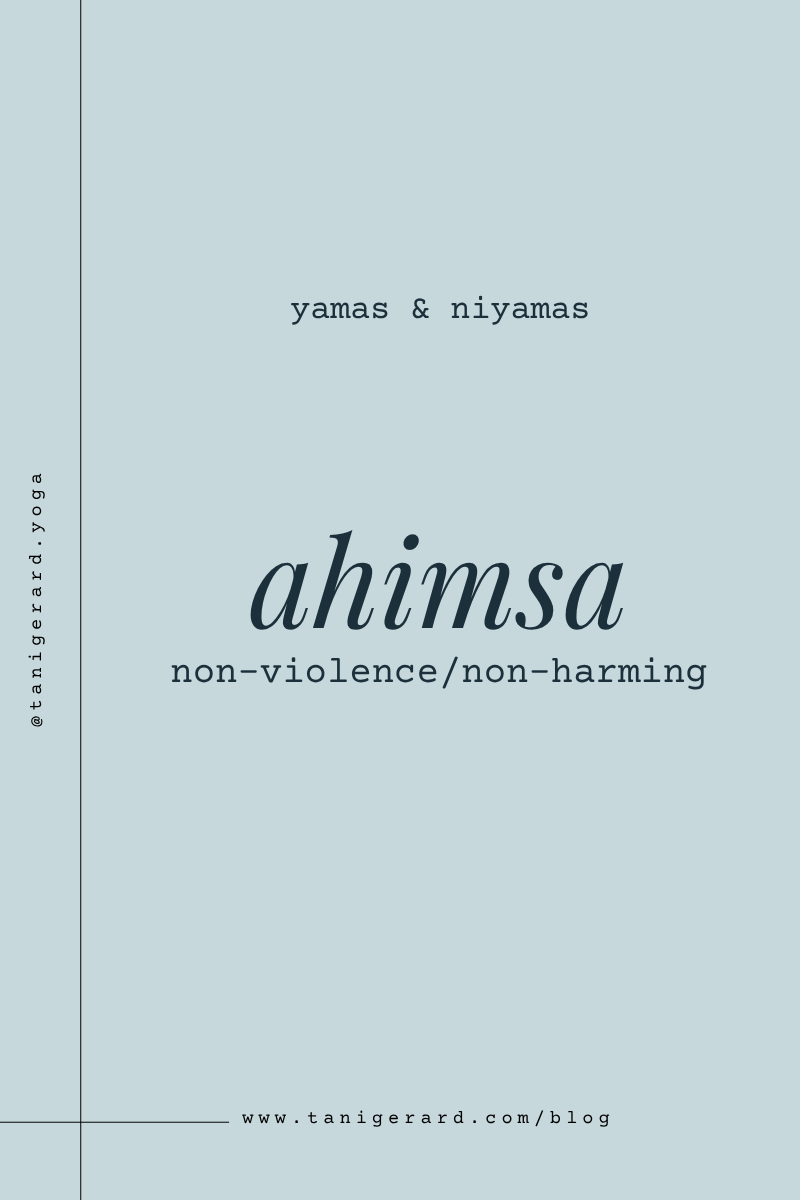ahimsa - non-violence
Yoga is so much more than rolling out a mat, moving and breathing, taking a little rest, and then rolling out of the studio. Maybe you've heard that yoga extends beyond the physical postures to a way of life off the mat. Over the upcoming weeks, I'll be sharing some thoughts on the philosophy of yoga, starting with the Yamas and Niyamas.
Let's back up a few steps and build a foundation. Around the second century BCE, Patanjali, a sage from India, took yoga to a broader audience by authoring a Sanskrit text called the Yoga Sutras, which compiled the ancient teachings of yoga into an easier-to-understand format.*
This text contains what has come to be known as the Eight Limbs of Yoga, an eightfold path that serves as a guide to living with more awareness, balance, and inner peace. It begins with the yamas, ethical restraints or moral disciplines, and the niyamas, personal observance or disciplines.
The first yama, ahimsa, is arguably the most important and is the foundation upon which all that follows is built. A literal translation of ahimsa from Sanskrit would be "absence of injury." It means non-violence. Not just in actions, but in words, thoughts, and our habits. It's about choosing compassion over harm. Both toward others and toward yourself.
Ahimsa can, and should be practiced in daily life. Taking a stand against violence, oppression, and injustice is rarely easy, but the practice of yoga calls us to take a proactive stance. Something I'm working on daily, in a world that feels ever more prone to violence. However, ahimsa takes many other forms in our day-to-day life. It's speaking kindly to yourself. Nourishing your body. Communicating truthfully with care. Choosing more sustainable options. A particularly challenging example is giving yourself rest instead of pushing through. Brainstorm a few ways you can practice ahimsa this week!
We can practice ahimsa on our mats as well. Non-violence in the physical practice of yoga doesn't mean avoiding challenges, but rather respecting your body's limits! It's backing off when a pose just doesn't feel right. Reaching for a prop to create more space in the body. Letting go of comparison. Choosing to surrender instead of boosting your ego. It's a call to listen to our physical, mental, emotional, and spiritual bodies. We can't hear what's working its way through if we're so caught up in beating ourselves up.
Ahimsa starts with you. The way you treat yourself sets the tone for how you treat the world. I encourage you to start small. Find one small way that you can practice ahimsa over the upcoming weeks! Notice where harshness creeps in and replace it with compassion. Ahimsa invites us to live with more compassion, gentleness, and kindness in all that we do. Not just in our actions, but our thoughts, words, choices, and self-talk.
Ask yourself these questions:
Can I move through the world with more care?
Where can I use my voice and privilege to call out violence in the world?
What does ahimsa mean to you?
What's one way you're going to practice non-violence in your life over the coming weeks?
Resources
Allard, S. (2021, April 9). Who was Patanjali and what are The yoga sutras?. Hindu American Foundation. https://www.hinduamerican.org/blog/who-was-patanjali-and-what-are-the-yoga-sutras

